THE
MIRACLE OF CREATION / REPRODUCTION
The
miracle took place a long time ago, billions of years ago in
fact. But the chain of events is
ongoing and progressive and most women produce healthy
children who are clearly and identifiably the combination of
their genes in recombination in various proportions with the
partner who was the contributing donor at the time.

The
XTS-6 model top-loading automatic human incubator
$300,000
variable P.O.A. A
healthy baby or your money back
When
you think about it though, considering the advances in science,
it's a bit random. The interface is fraught with problems
organically and the recombination is not a sure thing. Even
choosing the sex of the child is down to luck, but it need not
be.
More
importantly, the natural organic method involves nine months of
virtual incapacity and discomfort for the mother, during which
her body is irreversibly altered and she loses her biologically
firm state in return for a nurturing organism aimed at providing
care for the infant. Though many natural mothers would not admit
it, they would have preferred not to succumb to the physiological
inevitabilities of childbirth, such as:-
-
Enlarged
breasts
-
Increased
fat deposits
-
Relaxed
muscle tone
-
Mood
swings
These
are just a few of the more obvious changes that women complain
about. Now what if all of that could be avoided and you became a
proud parent without inconvenience. It's not only physiology at
stake, there is also the time factor. Can you afford the time
from your career to have a baby? What if your career depends
upon your face or figure?
BACKGROUND
In
modern society career women are finding it increasingly difficult to take time off work to start a family. In addition,
having a baby the natural way takes its toll on the body, where
hormones trigger the increase of fats, size of the breasts and
lactation, and the stomach, or more correctly the womb grows to
accommodate the carrying and growth of the child they are
carrying.
LABOUR
SAVING DEVICES
It
all started with the washing machine, itself a development on
several other time saving devices such as the scrubbing board
and mangle. Then came Hoovers and Dishwashers, bread makers
and so on. We're a long way from robots that cook for us and do
the ironing - but this is the subject of serious research and
development. There are of course many other labour saving
devices. A car saves both time and labour. it speeds up you
journey and saves you running or pedaling. But the a push-cycle
was also a labour saving device. So, almost anything that is
automated is a labour saving device, including the computer
that your are reading this on.
INNOVATION
Constant
monitoring of the state of your child, actually increases its
health and the chance of a successful gestation. The child is
not subjected to toxins that a mother might ingest during her
term. Synthetic amniotic fluid is more robust that a humans,
much like synthetic motor oils offer much higher resistance to
oxidation and thus lubricate better than mineral oils.
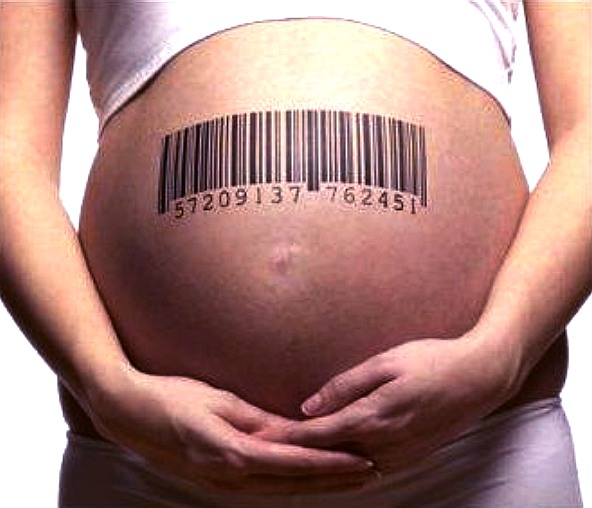
The
politics of human reproduction
OTHER
ADVANTAGES
A
mother operates a 24 hour cycle of sleep and awake periods
during which the embryo derives nourishment according to its
mother's digestion and delivery of nutrients.
It
is possible to shorten the gestation period by altering the
cycle to deliver more nutrients in the same time at higher
temperatures during a shorter cycle. I.E. 8 hour days, instead
of 24 hour days. In theory that would mean gestation reduced to
3 months instead of 9.
A human embryo can convert protein to tissue at a
rate consistent with its absorption capabilities, which is in
fact reliant on the mother's nutrient production capabilities -
and that is why a mother carrying will crave certain foods in
larger quantities than usual at strange times of the day. The
infant is demanding certain nutrients that the mother would not
normally need. Morning sickness is another example of the mother
involuntarily regulating her body's metabolism to meet the
unborn infants needs.
During a
natural gestation this is not at the ideal for various reasons,
some of which can obviously be put down to the availability of
food for the carrying mother. Put simply, does she have enough
food in her larder?
Adults
can assimilate 20-30 grams of protein from each digestive cycle.
That would be the equivalent of a baby reaching a delivery
weight of 10lbs in just 160 days on one meal per day. Increase
that to 5 meal shots a day and 10lbs is reached in just 32 days.
We
are not suggesting that anyone should try to attain birth weight
in that short a period for their own child - but the
implications for military applications are interesting to say
the least, should there ever be a Third
World War. Adolf Hitler
would have loved the XTS-6 for his Lebensborn
program. For more details and technical explanation, we recommend
that you read Cyber
Wars by Jameson Hunter.
HIDDEN
ADVANTAGES
This
product is future proofed, setting the scene for a time when
your unborn may be safely genetically modified to prevent
diseases such as cancer. This is presently the subject of much
research, mostly by the military to enhance the performance of soldiers.

Urging
women to farm was the UK's equivalent of Lebensborn, where more
male babies replenished
lost
soldiers, similarly, women working the land freed up men for
fighting
SURROGACY
The
service formerly provided by female human Surrogate
mothers is fraught with all kinds of legal and emotional
difficulties. See the film Juno. Surrogacy though has been the
only alternative to now. There is:-
-
Legitimate
surrogacy and
-
Illegitimate
surrogacy
1.
Legitimate surrogacy is where a human female contracts to have
the child (usually) for a couple who are maybe infertile, or who
can't spare the time from their careers to grow a baby.
2.
Illegitimate surrogacy is where a man or woman has an affair
with third party to a legitimate relationship and so sires a
(bastard) child.
The
arguments put forward by feminists simply pale into
insignificance. With the XTS-6 Incubus Autoclone™ there is no exploitation
of underprivileged classes, no so-called prostitution. A machine
does all the work with no complaints of emasculation. Truly,
freedom for feminists around the world and freedom for men from
complaints about chauvinistic treatment. Equality for the sexes.
We don't expect feminists around the world would agree, because
then they'd have nothing to complain about. Typically, their
argument will then change to challenge the ethics of cloning.
But this is not cloning plain and simple. It is no different in
principle to in vitro fertilization,
except that the developed egg (ovum) stands a better chance of
growing into a baby with the constant monitoring of the fetus.
It's
a bit like comparing the electronic digital diagnostic system
now employed by all vehicle manufacturers, to a mechanic who
tunes a car by ear. A doctor examining a patient would be the
mechanic tuning by ear, whereas the electronic finite monitoring
of vital life signs is probably 100,000 times more sensitive to
changes in metabolism than any human doctor and is constant. The
data may be streamed to any computer wirelessly for separate
analysis or as a permanent record, but in fact the quad core
processor built into the Incubus Autoclone XTS-6™ has far more
processing power than most hi-end computer systems - and records
your child's growth and heath all the way to birth.
In
this context "birth" is defined as the point in time
when the Incubus Autoclone XTS-6 calculates that the subject is
ready to go on to the next stage. I.e breathing air and taking
in food itself, progressing to solids, etc, and interfacing with
the world as an independent living organism: so becoming a
person.
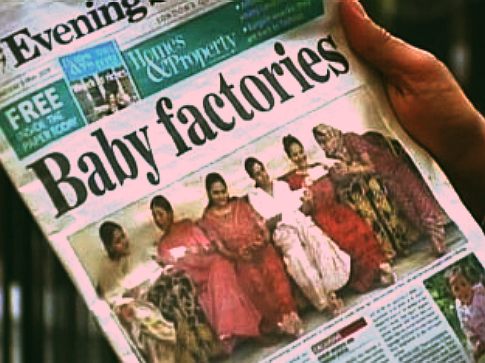
Articles
like this proves the market potential of the Incubus XTS-6™
and
would reduce the exploitation of vulnerable women.
We
are then faced with poverty issues, but that's another matter.
PROGRAM
SAFETY FEATURES
The
Incubus Autoclone™ is fully automatic. It monitors heart rate,
rate of growth, nutrient levels, temperature, cycle length and
many other parameters. Should there be anything out of the
ordinary, the prospective parent would be notified immediately.
This can be by way of text messages, phone
calls, or warnings
sent to a computer via email and/or directly by the Incubus
Autoclone™ emitting audible signals.
It's
much like a mother being under constant watch or having constant
check-ups. If anything is not going according to plan, you'll
know about it and the appropriate corrective steps can then be
taken.
SINGLE
FATHERS/MOTHERS
Using
the Incubus Autoclone™ there is no need for a partner. This
then could be the ultimate labour saving device (no pun
intended). There is no need to be in a relationship to have a
son or daughter. Indeed, you may choose the sex of your child,
who can be a 100% copy clone of yourself, a genetically modified
version of your self with plug-and-play, or the product of DNA
combination with the man or woman that you have selected as
ideal for reproductive purposes.
Having
selected the method of reproduction and set the Incubus
Autoclone™ going, your career need not be interrupted.
Monitoring the surrogate conception and birth takes far less
time a day than feeding a pet cat. Indeed, the machine normally
only requires nutrient top-up once a month, and that is achieved
in minutes using swap out cartridges.
COSTS
At
the moment the cost of an Incubus Autoclone™ reflects the considerable
research and development in getting such a product to market. As
the demand for such products increases, it is hoped that the price will reduce in line with all mass produced
labour saving devices, to a level affordable by every household.
Australopithecus
Australopithcus
africanus
Kenyanthropus
Paranthropus
robustus
Homo
habilis
Homo
erectus
Homo
heidelbergensis
Homo
neanderthalensis
Homo
Sapiens Sapiens
Homo
Sapiens Superior (Kanis
Rex)
|
Surrogates
movie trailer
- Youtube
|
Surrogates
Bruce Willis - Youtube
|
|
Surrogacy
v Adoption - Youtube
|
Surrogacy
in India
- Youtube
|
HUMAN
CLONING
Here
we are more concerned with the morality of cloning of humans,
using plug and play selection. Is it morally acceptable. Well,
humans have been breeding cattle,
cats, dogs
and horses for
hundreds of years, by selecting attributes that we'd like to see
in an animal. You may agree that there is not a lot of
difference between that age old practice and speeding up the
process using DNA sequencing from maps
generated by computer.
This
is a subject of hot international debate. For you the choice is
simple. It's your choice and your right to a private life
without interference by the, or any state. That is what the
European Convention of Human Rights says under Article 8. Your
body and all that goes with it is your property.
EARLY
HUMAN CLONING EXPERIMENTS
Hwang
Woo-suk (Korean: 황우석, born January 29,
1953) is a South Korean veterinarian and researcher. He was a professor of theriogenology and biotechnology at Seoul National University (dismissed on March 20, 2006) who became infamous for fabricating a series of experiments, which appeared in high-profile journals, in the field of stem cell research. Until November 2005, he was considered one of the pioneering experts in the field, best known for two articles published in the journal Science in 2004 and 2005 where he reported to have succeeded in creating human embryonic stem cells by cloning.
On May 12, 2006, Hwang was charged with embezzlement and bioethics law violations after it emerged much of his stem cell research had been
faked. The Korea Times reported on June 10, 2007, that Seoul National University fired him, and the South Korean government canceled his financial support and barred him from engaging in stem cell research.
While being charged with fraud and embezzlement, he has kept a relatively low profile at the Sooam Bioengineering Research Institute in Yongin, Gyeonggi Province, where he currently leads research efforts on creating cloned pig embryos and using them to make embryonic stem-cell lines.[4] Since the controversy subsided, despite the history and his lost credibility as a scientist, Hwang's lab has been actively publishing manuscripts, many of which have appeared on PubMed, the online database for biomedical research. In June 2010, a groundbreaking ceremony was held in Guro-gu, Seoul, for a new addition to Hwang's Sooam Bioengineering Research
Institute. In February 2011, Hwang visited Libya as part of a W150 billion project in the North African country to build a stem cell research center and transfer relevant technology. However, the project was canceled when civil war started
there.
Hwang was sentenced to a two years suspended prison sentence at the Seoul Central District Court on 26 October 2009, after being found guilty of embezzlement and bioethical violations but cleared of
fraud. On this same day, CNN reported that the scientist in 2006 admitted faking his findings, after questions of impropriety had
emerged. He had his conviction upheld on 15 December 2010 by an appeals court in South Korea, which knocked 6 months off Hwang’s suspended
sentence.
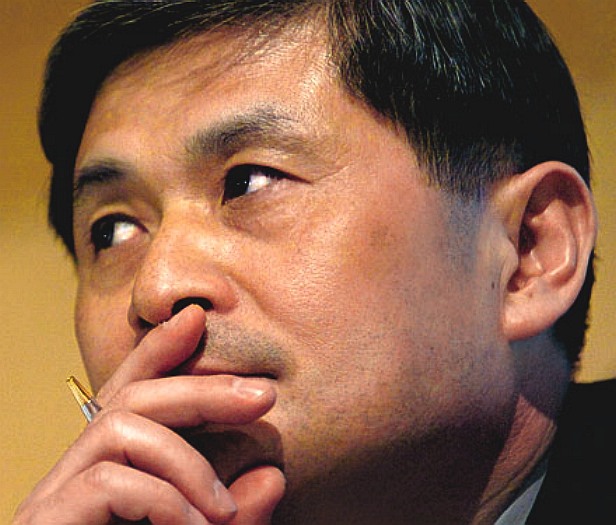
Hwang Woo-suk
Life
Hwang Woo Suk grew up in the central Korean province of South Chungcheong. He worked at a farm to finance his studies when his widowed mother could not earn enough to provide for him and five other siblings. Hwang matriculated at Seoul National University after graduating from Daejeon high school. It was later revealed that despite his professors urging that he become a medical doctor, Hwang chose to be a veterinarian. After earning his doctorate.
Lifestyle
Every day, he would turn up at the laboratory at 6 AM and leave at midnight. Hwang would only get to see his wife at night. As he stated himself, "I work all day long .. It is my habit and hobby. I am driven by the quest to find cures for the
incurable." He has two sons from his first marriage in 1979 and a daughter from his second marriage in 1997. He divorced his first wife in 1988 while he was under treatment for liver
cancer. He was a Roman Catholic, but he converted to Buddhism after he visited Jeondeung Temple in Ganghwa-do, a part of Incheon, in 1987. Hwang stated that he meditates daily for forty minutes. He would also occasionally take time off to visit the temple to pray. Hwang also commented on his reverence towards Buddhist monks: "I would have been a monk if I did not become a scientist. I respect their way of life."
Timeline
Hwang first caught media attention in South Korea when he announced he successfully created a cloned dairy cow, Yeongrong-i in February 1999. His alleged success was touted as the fifth instance in the world in cow cloning, with a notable caveat: Hwang failed to provide scientifically verifiable data for the research, giving only media sessions and photo-ops. Hwang's next claim came only two months later in April 1999, when he announced the cloning of a Korean cow, Jin-i, also without providing any scientifically verifiable data. Despite the notable absence of any of the scientific data needed to probe the validity of the research, Hwang's several claims were well received by the South Korean media and public, who were attracted by Hwang's claim of immeasurable economic prospect that his research was said to be promising. Until 2004, Hwang's main area of research remained in creating genetically modified livestock that included cows and pigs. During that period, Hwang claimed to have created a BSE-resistant cow (which has not been verified) and also stated his intention to clone a Siberian tiger.
In February 2004, Hwang and his team announced that they had successfully created an embryonic stem cell with the somatic cell nuclear transfer method, and published their paper in the March 12 issue of
Science. Although Hwang had already established himself as an expert in animal cloning and secured celebrity status in South Korea in the late 90s, his alleged sudden success came as a surprise because this was the first reported success in human somatic cell cloning. Until Hwang's claim, it was generally agreed that creating a human stem cell by cloning was next to impossible due to the complexity of primates. Hwang explained that his team used 242 eggs to create a single cell line.
Hwang's team announced an even greater achievement a year later in May 2005, and claimed they had created 11 human embryonic stem cells using 185 eggs. His work, published in the June 17 issue of
Science, was instantly hailed as a breakthrough in biotechnology because the cells were allegedly created with somatic cells from patients of different age and gender, while the stem cell of 2004 was created with eggs and somatic cells from a single female donor. This meant every patient could receive custom-made treatment with no immune reactions. In addition, Hwang's claim meant that his team had boosted their success rate by 14 times and that this technology could be medically viable.
Hwang made further headlines in May 2005 when he criticized U.S. President George W. Bush's policy on embryonic stem cell research. Also, Time magazine named Hwang one of its "People Who Mattered 2004," stating that Hwang "has already proved that human cloning is no longer science fiction, but a fact of
life."
Following on the earlier success, on August 3, 2005, Hwang announced that his team of researchers had become the first team to successfully clone a dog, which has been independently verified through genetic testing. The dog, an Afghan Hound, was named Snuppy.
Shortly after his groundbreaking 2005 work, Hwang was appointed to head the new World Stem Cell Hub, a facility that was to be the world's leading stem cell research centre. However, in November 2005, Gerald Schatten, a University of Pittsburgh researcher who had worked with Hwang for two years, made the surprise announcement that he had ceased his collaboration with Hwang. In an interview, Schatten commented that "my decision is grounded solely on concerns regarding oocyte (egg) donations in Hwang's research reported in 2004." Following an intense media probe, Roh Sung-il, one of Hwang's close collaborators and head of MizMedi Women's Hospital, held a news conference on November 21.
During the conference Roh admitted that he had paid women US$1,400 each for donating their eggs, eggs that were later used in Hwang's research. However, Roh claimed Hwang was unaware of this, while the South Korean Ministry of Health assured that no laws or ethical guidelines had been breached as there were no commercial interests involved in this payout. Hwang maintained that he was unaware that these actions were happening during the research and he resigned from his post.
On November 22, "PD Su-cheop" (Producer's Notebook), a popular MBC investigative reporting show, raised the possibility of unethical conduct in the egg cell acquiring process. Despite the factual accuracy of the report, news media as well as people caught up in nationalistic fervor in their unwavering support for Hwang asserted that criticism of Hwang's work was "unpatriotic," so much so that the major companies who were sponsoring the show immediately withdrew their support.
On November 24, Hwang held a press conference in Seoul, in which he declared his intention of resigning from most of his official posts.
He also apologized for his actions. In the interview he said, "I was blinded by work and my drive for achievement." He denied coercing his researchers into donating eggs and claimed that he found out about the situation only after it had occurred.
He added that he had lied about the source of the eggs donated to protect the privacy of his female researchers, and that he was not aware of the Declaration of Helsinki, which clearly enumerates his actions as a breach of ethical conduct.
After the press conference, which was aired on all major South Korean television networks, most of the nation's media outlets, government ministries, and the public gave support to Hwang. Sympathy for Hwang poured out, resulting in an increase in the number of women who wanted to donate their eggs for Hwang's research.
On December 29, 2005, the university determined that all 11 of Hwang's stem cell lines were
fabricated. The university announced on January 10, 2006, that Hwang's 2004 and 2005 papers on Science were both fabricated. Following on the confirmation of scientific misconduct, on January 11, Science retracted both of Hwang's papers on unconditional
terms.
On January 12, 2006, Hwang held a press conference to apologize for the entire fiasco, but still did not admit to cheating. Instead, he explicitly put the blame on other members of his research project for having deceived him with false data and alleged a conspiracy, saying that his projects had been sabotaged and that there was theft of materials involved. He said that cloning human stem cells was possible and that he had the technology to do it, and if he were given six more months he could prove it. This is an extension of the "ten days" he said he needed to re-create the stem cells that he asked for back on December 16, 2005. Seoul prosecutors raided his home that day for files and evidence, to start a "criminal investigation" of Hwang.
On January 20, 2006 Hwang maintained that two of his 11 forged stem cell lines had been maliciously switched for cells from regular, not cloned, embryos. The allegation involves the lines Hwang claims to have created at Seoul-based MizMedi
Hospital.
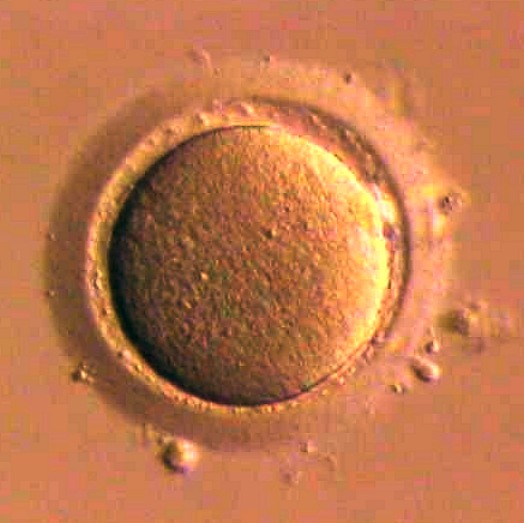
Human
Oocyte, egg development stage to Ovum
Hwang's laboratory
technique - Cloning
Somatic cell nuclear transfer can create clones for both reproductive and therapeutic purposes. The diagram depicts the removal of the donor nucleus for schematic purposes; in practice the whole donor cell is transferred.In the late 1990s, the method that scientists used in cloning was somatic cell nuclear transfer, which is the same procedure that was used to create Dolly the sheep. This laboratory technique begins when an egg is taken from a donor and the nucleus is removed from the egg, creating an enucleated egg. A cell, which contains DNA, is then taken from the animal being cloned. The enucleated egg is then fused together with the nucleus of the cloning subject's cell using electricity. This creates an embryo, which is implanted into a surrogate mother through in vitro fertilization. If the procedure is successful, then the surrogate mother will give birth to a baby that is a clone of the cloning subject at the end of a normal gestation period. The success rate is only about one or two out of 100 embryos. It took 277 attempts to create Dolly.
Hwang allegedly used this technique at his laboratory in SNU to clone dogs during his experiments throughout the early 2000s. He claimed that it was possible to clone mammals and that probability for success can be better than 1 in 277 attempts (as in similar cases such as Dolly). Although much of Hwang's animal cloning work conspicuously lacked any supporting papers, Hwang's cloned dog, Snuppy, was featured in an August 2005 issue of
Nature.
Hwang's intention to develop better techniques on cloning was focused on stem cells because they are still at an early stage of development and retain the potential to turn into many different types of cell and when they divide, each new cell has the potential to either remain a stem cell or become another type of cell with a more specialized function.
According to stem cell biologists, it might be possible to harness this ability to turn stem cells into a super "repair kit" for the body, theoretically to use stem cells to generate healthy tissue to replace that either damaged by trauma or compromised by disease. The many conditions and illnesses that may eventually be treated by stem cell therapy include Parkinson's disease, Alzheimer's disease, heart disease, stroke, arthritis, diabetes, burns, and spinal cord damage.
In March 2012, it was announced that Hwang would collaborate with Russian scientists in an attempt to clone a woolly mammoth from remains found in
Siberia. He had previously announced the successful cloning of a coyote in
2011.
Controversies
- Scientific misconduct
Until late November 2005, Hwang was criticized only for unpublicized ethical violations. Colleagues and media outlets asserted that he had paid female donors for egg donations and that he had received donations from two junior researchers, both of which were violations. Later controversies would center around scientific misconduct.
His team, which cloned the first human embryo to use for research, said they had used the same technology to create batches of embryonic stem cells from nine patients. According to Hwang, the result was much more efficient than they had hoped. Hwang's integrity as a researcher was again put in doubt when it was revealed that "PD Su-cheop" scheduled a follow-up report questioning his achievement published in Science in June 2005, which stated he had cloned 11 lines of embryonic stem cells. This caused furious backlash among many South Koreans, and the reaction only intensified when it was discovered that Kim Sun-Jong, one of Hwang's researchers from MizMedi, was coerced by illegal means to testify against Hwang. As a result, the scheduled broadcast was canceled and the network even made a public apology to the nation, everyone more or less operating under the assumption that the show was at fault and not Hwang. Yet, other news outlets began to question Hwang's claims.
Close scrutiny revealed that several of the photos of purportedly different cells were in fact photos of the same cell. Hwang responded that these additional photos were accidentally included and that there was no such duplication in the original submission to Science. This was later confirmed by the journal.
Researchers raised questions about striking similarities between the DNA profiles of the cloned cells. Then collaborator Gerald Schatten asked Science to remove his name from the paper, stating as a reason that there were "allegations from someone involved with the experiments that certain elements of the report may be fabricated".
In the midst of national confusion, Hwang disappeared from public sight, to be hospitalized days later for alleged stress-related fatigue, while public opinion gradually began to turn against Hwang with even the major Korean companies who pulled their support from "PD Su-Cheop" reportedly now less than pleased with Hwang. Days later, Hwang started going to his laboratory while requesting Seoul National University to officially conduct a probe to the allegations surrounding him.
The scandal took a dramatic turn on December 15, when Roh Sung-il, who collaborated on that paper, stated to media outlets that nine of those eleven lines had been faked; specifically, DNA tests illustrated that those nine lines shared identical DNA, implying that they had come from the same source. Roh stated that "Professor Hwang admitted to fabrication," and that he, Hwang, and another co–author had asked Science to withdraw the
paper. Adding fuel to the fire, MBC broadcasted the content of the canceled PD Su-cheop show, which substantiated Roh's claim.
On the same day, ABC news reported that Science had not yet received an official request from Hwang to withdraw the paper, and it had refused to remove Schatten's name from the paper, stating, "No single author, having declared at the time of submission his full and complete confidence in the contents of the paper, can retract his name unilaterally, after publication."
Several prominent scientists, including Ian Wilmut, who cloned Dolly the sheep in 1996, and Bob Lanza, a cloning expert based in Worcester, Massachusetts, did call on Hwang to submit his paper to an outside group for independent analysis. Lanza noted, "You can't fake the results if they're carried out by an independent group. I think this simple test could put the charges to rest."
Two major press conferences were held on Korean networks on December 16, one with Hwang followed by the other with his former colleague, Roh Sung-il. Hwang started his press conference by claiming that the technology to make stem cells exists, which is not an explicit statement that the stem cell lines he featured in his paper to Science were not fakes. He, however, acknowledged the falsifications of research data in the paper, attributing them to unrecoverable "artificial mistakes." He said that there was a problem with the original lines caused by contamination, and if he were given ten more days he could re-create the stem cell lines. He accused Dr. Kim Sun-Jong, a former collaborator, of "switching" some of the stem cell lines.
Despite Hwang's claim, in another press conference held only minutes later, Roh Sung-il rebutted Hwang's accusation, saying Hwang was blackmailing MizMedi and Kim Sun-jong. He maintained that at least nine of the eleven stem cell lines were fakes and that Hwang is simply untrustworthy.
Public opinion appears to be that Hwang was dancing around the issue of whether his work was faked or
not.
"Roh Sung-il, chairman of the board at Mizmedi Hospital, told KBS television that Hwang had agreed to ask the journal Science to withdraw the paper, published in June to international acclaim. Roh was one of the co-authors of the article that detailed how individual stem cell colonies were created for 11 patients through cloning. Roh also told MBC television that Hwang had pressured a former scientist at his lab to fake data to make it look like there were 11 stem cell colonies. In a separate report, a former researcher told MBC that Hwang ordered him to fabricate photos to make it appear there were 11 separate colonies from only three.
University of Pittsburgh researcher Gerald Schatten has already asked that Science remove him as the senior author of the report, citing questions about the paper's accuracy. Seoul National University announced this week it would conduct an internal probe into Hwang's
research."
Some scientists have started questioning Hwang's earlier work published in Science in February 2004 in which he claimed to have cloned embryonic stem cells. Maria Biotech head Park Se-pill said, ``Up until now, I have believed Hwang did derive cloned embryonic stem cells although he admitted to misconduct in his follow-up paper on patient-specific stem cells...Now, I am not sure whether the cloned stem cell really
existed.’’
On July 26, 2006, Hwang said in testimony that he spent part of 500 million won in private donations in attempts to clone extinct Russian mammoths and Korean
tigers.
|
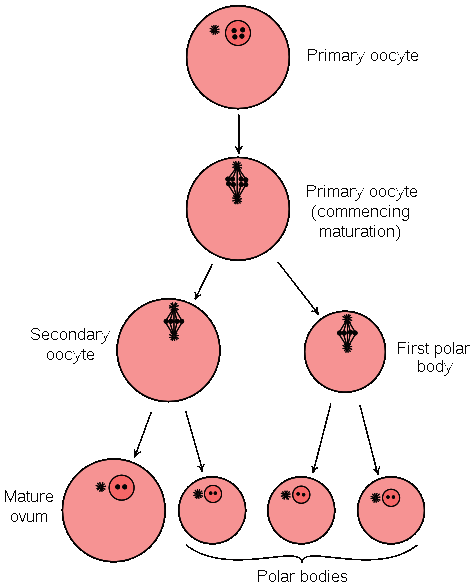
Diagram
of Oocyte development to a mature Ovum
|
Official probe by Seoul National University and the confirmation of
fraud
An internal panel was set up in Seoul National University to investigate the allegation, and the probe was started on December 17, 2005. The panel sealed off Hwang's laboratory and conducted a thorough investigation, collecting testimonies from Hwang, Roh and other people that were involved with the scandal. On December 23, the panel announced its initial finding that Hwang had intentionally fabricated stem cell research results creating nine fake cell lines out of eleven, and added that the validity of two remaining cell lines is yet to be confirmed. The panel stated that Hwang's misconduct is "a grave act damaging the foundation of science." Hwang's claim of having used only 185 eggs to create stem cell lines was also denied by the panel, which indicated that more eggs may have been used in the research process.
The panel announced additional findings on December 29, and confirmed that there are no patient-matched embryonic stem cells in existence and that Hwang's team doesn't have the scientific data to prove any of the stem cells have ever been
made.
In its final report published on January 10, 2006, the panel reaffirmed its previous findings while announcing additional
discoveries. The panel found out that, contrary to Hwang's claim of having used 185 eggs for his team's 2005 paper, at least 273 eggs were shown to have been used according to research records kept in Hwang's lab. In addition, the panel discovered that Hwang's team was supplied with 2,061 eggs in the period of November 28, 2002 to December 8, 2005. Hwang's claim of not having known about the donation of eggs by his own female researchers was also denied by the panel; in fact, it was discovered that Hwang himself had distributed egg donation consent forms to his researchers and personally escorted one to the MizMedi Hospital to have the egg extraction procedure.
The panel stated that Hwang's 2004 Science paper was also fabricated and decided the stem cell discussed in the paper may have been generated by a case of parthenogenetic process. Although Hwang's team didn't rule out the possibility of parthenogenetic process in the paper, the panel said, his team didn't make any conscientious effort to probe the possibility through the tests available.
Chung Myunghee, the head of the panel, said at a news conference that the panel is not in a position to investigate Hwang's claim of his stem cells having been switched with MizMedi's, but added that such a claim is incomprehensible when there is no data to prove any of the stem cells were ever made to begin with.
The panel, in conclusion, stated that Hwang's team intentionally fabricated the data in both the 2004 and the 2005 papers and that it is "an act of deception targeted to both scientific community and general public." However, the panel confirmed that Hwang's team actually succeeded in cloning a dog they named
Snuppy.
Hwang's announcement of resignation and the official
dismissal
On December 23, 2005 Hwang apologized for "creating a shock and a disappointment" and announced that he was resigning his position as professor at the
university. However, Hwang maintained that patient-matched stem cell technology remains in South Korea, and his countrymen shall see it.
Seoul National University said Hwang's resignation request will not be accepted, citing a university regulation that dictates an employee under investigation may not resign from a post. This regulation is effected to prevent premature resignations by investigated employees, which would allow them to avoid full retributions according to the findings of the investigation (and perhaps avoid involuntary termination), while reaping the benefits of the more honorable and lucrative voluntary resignation.
On February 9, 2006, the university suspended Hwang's position as the university's professor, together with six other faculty members who participated in Hwang's
team. Subsequently, Hwang was dismissed from the university on March 20, 2006.
The indictment of Hwang and five of his
collaborators
On May 12, 2006, Hwang was indicted on charges of fraud, embezzlement and breach of the country's bioethics law, without physical detention. Prosecutors also brought fraud charges against the three stem cell researchers. He embezzled 2.8 billion won ($3 million) out of some 40 billion won in research funds for personal purposes and the illegal purchase of ova used in his experiments.
The prosecution also said Hwang's three associates involved in his stem cell research, Yoon Hyun-soo, Lee Byeong-chun and Kang Sung-keun, also misappropriated tens of millions of won in research money. Investigators have been tracking 24.6 billion won to find out how the research money was spent. It was part of Hwang's 36.9 billion won research funds raised through state support and private donations. Investigators said Hwang used bank accounts held by relatives and subordinates in 2002 and 2003 to receive about 475 million won from private organizations.
He allegedly laundered the money by withdrawing it all in cash, breaking it up into smaller amounts and putting it back in various bank accounts. Hwang also withdrew 140 million won in August 2001 to buy gifts for his sponsors, including politicians and other prominent social figures, before Chusok holidays, according to prosecutors. He also allegedly misappropriated around 26 million won in research funds in September 2004 to buy a car for his wife. Hwang is suspected of embezzling 600 million won, provided by a private foundation, on multiple occasions from 2001 to 2005 for personal use. Prosecutors are also accusing him of illegally paying some 38 million won to 25 women who provided ova for his research through Hanna Women's Clinic in the first eight months of 2005.
They also said Hwang gave several dozen politicians about 55 million won in political funds on numerous occasions from 2001 to 2005. He allegedly provided 14 million won to executives of large companies that provided financial support for his research. The prosecution added Hwang wired about 200 million won to a Korean American, identified only as Kang, in September 2005 and received the equivalent amount in U.S. currency from him when the scientist visited the United States two months later. Also in 2005, Hwang received one billion won each in research funds from SK Group and the National Agricultural Cooperative Federation based on his fabricated stem cell research results. Meanwhile, investigators said Lee Byeong-chun and Kang Sung-keun, both professors of veterinary science at Seoul National University, embezzled about 300 million won and 100 million won each in state funds by inflating research-related expenses. Yoon Hyun-soo, a biology professor at Hanyang University, also embezzled 58 million won from the research fund managed by MizMedi Hospital.

Parthenogenesis
On August 2, 2007, after much independent investigation, it was revealed that Hwang's team succeeded in extracting cells from eggs that had undergone parthenogenesis. Hwang claimed he and his team had extracted stem cells from cloned human embryos. However, further examination of the cells' chromosomes shows the same indicators of parthenogenesis in those extracted stem cells as are found in the mice created by Tokyo scientists in 2004. Although Hwang deceived the world about being the first to create artificially cloned human embryos, he did contribute a major breakthrough to the field of stem cell research. The process may offer a way for creating stem cells that are genetically matched to a particular woman for the treatment of degenerative
diseases.
The news of the breakthrough came just a month after an announcement from the International Stem Cell Corporation (ISC), a California based stem cell research company, that they had successfully created the first human embryos through parthenogenesis. Although the actual results of Hwang's work were just discovered, those embryos were created by him and his team before February 2004, when the fabricated cloning results were announced, which would make them the first to successfully perform the process. Jeffrey Janus, president and director of research for ISC, agrees that "Dr. Hwang's cells have characteristics found in parthenogenetic cells" but remains cautious, saying "it needs more
study."
South Korea's response to
controversies
South Korean government's involvement in the scandalAfter having acquired a celebrity status in South Korea, Hwang actively sought to establish every possible tie to political and economic institutions in the country. Hwang especially tried to win favor from the Roh Moo-hyun government, which in turn was suffering from a lack of popular support and wanted to demonstrate its competency by creating and promoting an exemplary policy success.
Hwang approached Park Ki-young, a former biology professor, then appointed as the Information, Science and Technology Advisor for the President, and put her as one of the co-authors in his 2004 Science paper. Ties with Park yielded a favorable environment for Hwang in the government, as a non-official group consisting of high-ranking government officials was created to support Hwang's research that includes not only Hwang and Park, but also Kim Byung-joon, Chief National Policy Secretary, and Jin Dae-je, Information and Communications minister. The group was dubbed as "Hwang-kum-pak-chui," a loose acronym made from each member's family names, which means "golden bat" in Korean.
After Hwang's paper was published in Science in 2005, support for Hwang came in full swing. In June 2005, the Ministry of Science and Technology selected Hwang as the first recipient of the title Supreme Scientist, an honor worth US$15
million. Hwang, having already claimed the title of POSCO Chair Professor worth US$ 1.5 million, secured more than US$ 27 million worth of support in that
year.
President Roh had been acquainted with Hwang since 2003, and made a number of comments intended to protect Hwang from potential bioethical issues. On June 18, 2004, Roh awarded Hwang a medal and said, "it is not possible nor desirable to prohibit research, just because there are concerns that it may lead to a direction that is deemed unethical." In another instance at the opening of World Stem Cell Hub on October 19, 2005, Roh remarked, "politicians have a responsibility to manage bioethical controversies not to get in the way of this outstanding research and
progress."
On December 5, 2005, after PD Su-cheop stirred a national controversy, Cheong Wa Dae reaffirmed its unflinching support for Hwang and his research team. Roh said, "We'll continue to support Professor Hwang. We hope he will return to his research lab soon for the sake of people with physical difficulties and the public," according to presidential spokesman Kim Man-soo.
While implying the controversies over MBC-TV's forceful methods used to gather information from Hwang's former junior staff members, Roh said, "The disputes will be resolved gradually and naturally through following scientific research and study. We hope the ongoing disputes over Hwang's achievement will be settled without further
trouble."
It was alleged that advisor Park Ki-young deliberately avoided to report Roh about details of Hwang's allegation for misconduct, while emphasizing a breach of journalist ethics by MBC. Park, after weeks of silence for her role in the controversy, announced her intent to resign from the advisor post on January 10, 2006.
On January 11, 2006, the national post office stopped selling post stamps commemorating Hwang's research. The title of Supreme Scientist awarded to Hwang was revoked on March 21, 2006, after Hwang was dismissed from Seoul National University the day before.

AP .Hwang Woo-suk, en 2005Su anunció causó una gran conmoción en el mundo entero, repercutiendo no sólo en el ámbito de la ciencia, sino también en el de la bioética, la moral, el derecho, la religión y, a través de los medios de comunicación, en la sociedad, que veía una luz para la posible curación de enfermedades como el alzhéimer, el párkinson o la diabetes.
En los dos años que duró su gloria, Woo-suk se convirtió en una especie de leyenda viva, admirada por el pueblo y promocionada por un Gobierno que vio en él a un niño pobre, de origen rural, que había conseguido alcanzar la gloria mundial en algo tan complejo como la investigación genética. Se crearon clubes de admiradores en toda Corea del Sur, webs con nombres como «Yo amo a HWS» y la prensa y la televisión seguían sus pasos y elevaban a la categoría de cita célebre cualquier comentario que hiciera.
De héroe a villano
No era para menos. En apenas un año y medio, desde febrero de 2004 a octubre de 2005, Hwang Woo-suk, que poseía una ambición desmedida, había anunciado un embrión clonado, poco después la clonación de las células madre de origen humano y poco después, por si había alguna duda, presentaba a «Snuppy», el primer perro clónico del planeta.
REUTERS .Hwang Woo-suk, tras admitir su errorTodo ello hizo que el Gobierno le otorgara fondos para sus investigaciones de millones de dólares y que creó el primer banco mundial de células madre, con él a la cabeza. Pero su gloria no duró mucho más… tres meses después de aquello, en enero de 2006, se descubría que toda su investigación «histórica» había sido un fraude.
En diciembre de 2005, prestigioso director del Hospital Mizmedi, Roh Sung-il, aseguró en la cadena de televisión KBS y en la MBC que Hwang había utilizado células madre falsas para su famosa investigación. Agregó que por lo menos uno de sus jóvenes colaboradores había sido obligado a participar a sabiendas en semejante engaño y que él mismo había oído a Hwang
exclamar.
Weblog
von Julia Petschinka
Der
Klonforscher Hwang Woo Suk, einst der "Stolz Koreas",
ist entthront. Der Abschlussbericht der Nationaluniversität von
Seoul hat endgültig festgestellt, dass der Genforscher Hwang
Woo Suk niemals menschliche Stammzellen geklont und maßgeschneiderte
Stammzellen hergestellt hat.
Lukas Wieselberg berichtet auf science.orf.at (vom 10.1.2006) über
den Aufdecker-Krimi, an dem mutige koreanische Forscher und
Journalisten mitgeschrieben haben (zusammengefaßt wurde der
Krimi im Magazin Science, in dem Hwang Woo Suk seine -gefälschten-
Studien veröffentlichen konnte).
Der Bericht ist absolut lesenswert. Er zeigt einerseits die
Dreistigkeit der Wissenschaftler, andererseits aber auch die
Vorgehensweise der Journalisten, um zu brauchbaren Aussagen zu
kommen.
...Die Studie von Hwang zur Klonung individueller
Stammzellen von Patienten war Ende Mai erschienen. Nur wenige
Tage später erhielt die Redaktion der investigativen TV-Sendung
"PD Notebook" des südkoreanischen Senders MBC (Munhwa
Broadcasting Corp.) ein anonymes E-Mail. Ein Mitarbeiter Hwangs
äußerte darin vorerst nicht näher definierte "ethische
Bedenken" wegen der Arbeiten seines Chefs....
... Was danach folgte, war auch nach Eigenansicht kein
Glanzstück von journalistischem Berufsethos: "PD
Notebook" interviewte Co-Autoren der Studie unter dem
Vorwand, eine Sendung über "Biotechnologie in Korea"
zu produzieren. ...
OTHER
ANIMALS:
A
taste for adventurous parents

Solar
Cola - the healthier cola alternative
|








